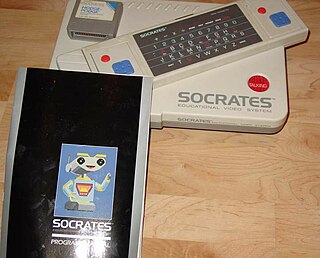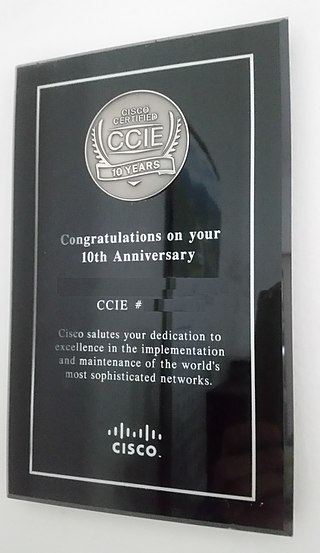
A polymath or polyhistor is an individual whose knowledge spans many different subjects, known to draw on complex bodies of knowledge to solve specific problems.

A standardized test is a test that is administered and scored in a consistent, or "standard", manner. Standardized tests are designed in such a way that the questions and interpretations are consistent and are administered and scored in a predetermined, standard manner.

A project manager is a professional in the field of project management. Project managers have the responsibility of the planning, procurement and execution of a project, in any undertaking that has a defined scope, defined start and a defined finish; regardless of industry. Project managers are first point of contact for any issues or discrepancies arising from within the heads of various departments in an organization before the problem escalates to higher authorities, as project representative.
Educational assessment or educational evaluation is the systematic process of documenting and using empirical data on the knowledge, skill, attitudes, aptitude and beliefs to refine programs and improve student learning. Assessment data can be obtained by examining student work directly to assess the achievement of learning outcomes or it is based on data from which one can make inferences about learning. Assessment is often used interchangeably with test but is not limited to tests. Assessment can focus on the individual learner, the learning community, a course, an academic program, the institution, or the educational system as a whole. The word "assessment" came into use in an educational context after the Second World War.

Multiple choice (MC), objective response or MCQ is a form of an objective assessment in which respondents are asked to select only correct answers from the choices offered as a list. The multiple choice format is most frequently used in educational testing, in market research, and in elections, when a person chooses between multiple candidates, parties, or policies.
Electronic assessment, also known as digital assessment, e-assessment, online assessment or computer-based assessment, is the use of information technology in assessment such as educational assessment, health assessment, psychiatric assessment, and psychological assessment. This covers a wide range of activities ranging from the use of a word processor for assignments to on-screen testing. Specific types of e-assessment include multiple choice, online/electronic submission, computerized adaptive testing such as the Frankfurt Adaptive Concentration Test, and computerized classification testing.

The College Level Examination Program is a group of standardized tests created and administered by the College Board. These tests assess college-level knowledge in thirty-six subject areas and provide a mechanism for earning college credits without taking college courses. They are administered at more than 1,700 sites across the United States. There are about 2,900 colleges which grant CLEP credit. Each institution awards credit to students who meet the college's minimum qualifying score for that exam, which is typically 50 to 60 out of a possible 80, but varies by site and exam. These tests are useful for individuals who have obtained knowledge outside the classroom, such as through independent study, homeschooling, job experience, or cultural interaction; and for students schooled outside the United States. They provide an opportunity to demonstrate proficiency in specific subject areas and bypass undergraduate coursework. Many take CLEP exams because of their convenience and lower cost compared to a semester of coursework for comparable credit.
Technology integration is defined as the use of technology to enhance and support the educational environment. Technology integration in the classroom can also support classroom instruction by creating opportunities for students to complete assignments on the computer rather than with normal pencil and paper. In a larger sense, technology integration can also refer to the use of an integration platform and application programming interface (API) in the management of a school, to integrate disparate SaaS applications, databases, and programs used by an educational institution so that their data can be shared in real-time across all systems on campus, thus supporting students' education by improving data quality and access for faculty and staff.
"Curriculum integration with the use of technology involves the infusion of technology as a tool to enhance the learning in a content area or multidisciplinary setting... Effective technology integration is achieved when students can select technology tools to help them obtain information on time, analyze and synthesize it, and present it professionally to an authentic audience. Technology should become an integral part of how the classroom functions—as accessible as all other classroom tools. The focus in each lesson or unit is the curriculum outcome, not the technology."
A lesson plan is a teacher's detailed description of the course of instruction or "learning trajectory" for a lesson. A daily lesson plan is developed by a teacher to guide class learning. Details will vary depending on the preference of the teacher, subject being covered, and the needs of the students. There may be requirements mandated by the school system regarding the plan. A lesson plan is the teacher's guide for running a particular lesson, and it includes the goal, how the goal will be reached and a way of measuring how well the goal was reached.
Kloof High School is a public, English medium co-educational high school located in Kloof, a small town between the provincial capital of Pietermaritzburg and Durban in the KwaZulu-Natal province of South Africa.
A math circle is an extracurricular activity intended to enrich students' understanding of mathematics. The concept of math circle came into being in the erstwhile USSR and Bulgaria, around 1907, with the very successful mission to "discover future mathematicians and scientists and to train them from the earliest possible age".
This article describes the selection process, by country, for entrance into the International Mathematical Olympiad.

The International Philosophy Olympiad (IPO) is an annual philosophy competition for high school students from around the world, one of the International Science Olympiads. It is organized under the auspices of the International Federation of Philosophical Societies (FISP) and supported by UNESCO.

An educational video game is a video game that provides learning or training value to the player. Edutainment describes an intentional merger of video games and educational software into a single product. In the narrower sense used here, the term describes educational software which is primarily about entertainment, but tends to educate as well and sells itself partly under the educational umbrella. Normally software of this kind is not structured towards school curricula and does not involve educational advisors.

A WebQuest is an inquiry-oriented lesson format in which most or all the information that learners work with comes from the web. These can be created using various programs, including a simple word processing document that includes links to websites.
The World Robot Olympiad (WRO) is a global robotics competition for young people. The World Robot Olympiad competition uses Lego Mindstorms manufactured by LEGO Education. First held in 2004 in Singapore, it now attracts more than 28,000 teams from more than 85 countries.

The Cisco Certified Internetwork Expert, or CCIE, is a technical certification offered by Cisco Systems. The Cisco Certified Internetwork Expert (CCIE) and Cisco Certified Design Expert (CCDE) certifications were established to assist the industry in distinguishing the top echelon of internetworking experts worldwide and to assess expert-level infrastructure network design skills worldwide. Holders of these certifications are generally acknowledged as having an advanced level of knowledge. The CCIE and CCDE communities have established a reputation for leading the networking industry in deep technical networking knowledge and are deployed in the most technically challenging network assignments. The expert-level certification program continually updates and revises its testing tools and methodologies to ensure and maintain program quality, relevance and value. Through a rigorous written exam and a performance-based lab exam, these expert-level certification programs set the standard for internetworking expertise.
Wissenaire is the annual techno-management festival of Indian Institute of Technology Bhubaneswar held in the Arugul, permanent campus of IIT Bhubaneswar. It is one of the most awaited technical festival of East India. It is a three-day-long event usually held during the third week of January every year. The word Wissenaire is derived from the German word 'Wissen' meaning knowledge and 'aire' meaning free. Thus it is justified by its tagline knowledge runs free. Wissenaire encompasses various sectors of technology, science and management. These include quizzing, coding, designing, robotics, planning and testing the creativity and innovative spirit of the young technical minds.

The Family, Career and Community Leaders of America is a national 501(c)(3) nonprofit career and technical student organization for young men and women in Family and Consumer Sciences education in public and private school through grade 12. FCCLA offers intra-curricular resources and opportunities for students to pursue careers that support families. Since 1945, FCCLA members have been making a difference in their families, careers, and communities by addressing important personal, work, and societal issues through Family and Consumer Sciences education. FCCLA continues to further the leadership development of America's students by providing them opportunities and skills that will last a lifetime.

Mathletics is an online educational website which launched in 2005. The website operates through a subscription model, offering access at an individual and school level. Online users, known as 'Mathletes', have access to math quizzes and challenges, and can participate in a real-time networked competition known as 'Live Mathletics'. A customisable avatar visually represents each player in the 'Live Mathletics' competitions. 'Credits' are awarded through the completion of quizzes and tasks, which can be used to customise their avatar's clothing and aesthetics.









